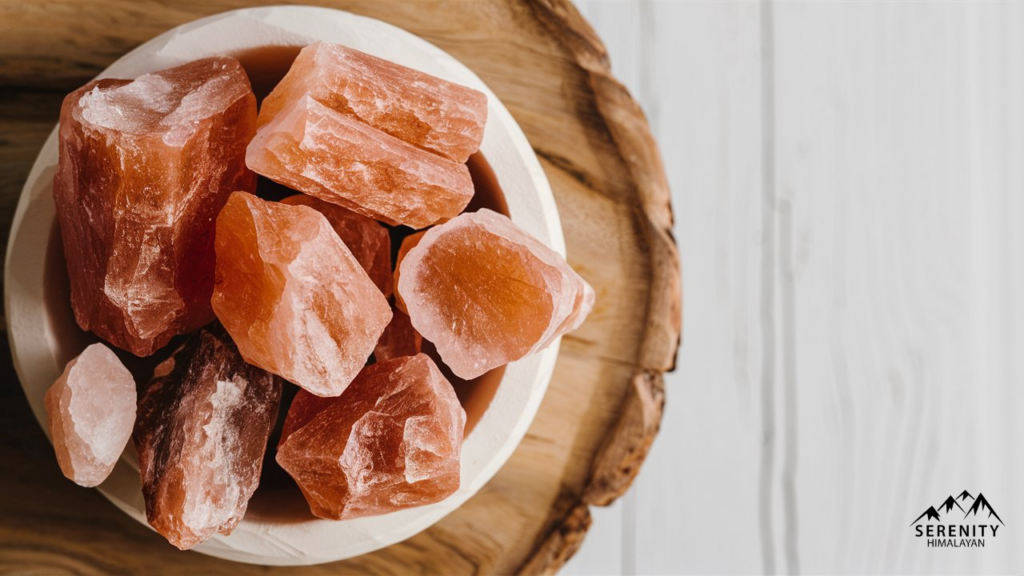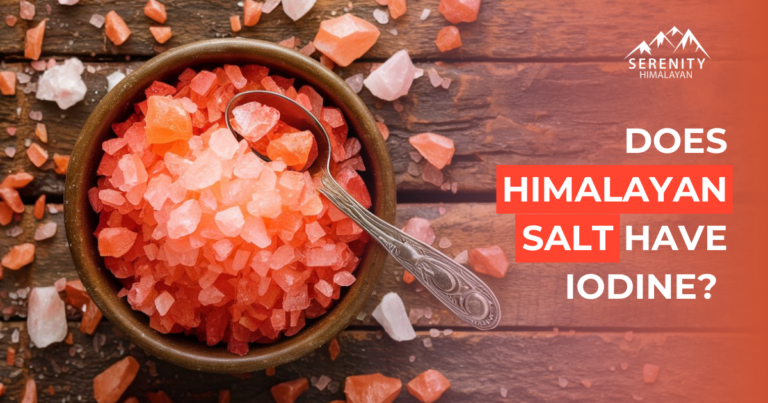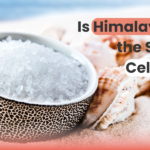Salt is a crucial part of our diet, not only for its flavour but also for its essential minerals. Among the different types of salt, Himalayan salt has gained attention for its unique pink colour and purported health benefits.
However, a common question that arises is whether Himalayan salt contains iodine, an essential mineral for thyroid function. In this article, we’ll explore the iodine content in Himalayan salt, compare iodized and non-iodized salts, and discuss the pros and cons of each.
Does Himalayan Salt Have Iodine?
Himalayan salt, also known as pink salt, is a type of rock salt harvested from the Khewra Salt Mine in Pakistan. It is known for its distinctive pink hue, which comes from trace minerals like iron, magnesium, and potassium. However, Himalayan salt does not naturally contain significant amounts of iodine.

How Much Iodine Is In Himalayan Salt?
The natural iodine content in Himalayan salt is minimal, making it an unreliable source of this essential mineral. While it contains many beneficial trace elements, iodine is not one of them in significant quantities.
What Does Iodine Do For The Body?
Iodine is a vital mineral that supports thyroid function, which regulates metabolism, growth, and development. It is essential for the production of thyroid hormones. A deficiency in iodine can lead to various health issues, including goiter, hypothyroidism, and developmental delays in children.
Hypothyroidism And Salt Intake
Hypothyroidism, a condition where the thyroid gland does not produce enough hormones, can be managed with adequate iodine intake. This is where iodized salt becomes crucial, as it is fortified with iodine to help prevent deficiency.
Cure Hyperthyroidism With Natural Pink Himalayan Salt
Hyperthyroidism, on the other hand, is a condition where the thyroid gland produces too much hormone. Some believe that the trace minerals in Himalayan salt can help balance thyroid function, although this is not scientifically proven. Always consult a healthcare provider for proper diagnosis and treatment.
Can Iodine Be Harmful?
While iodine is essential, excessive intake can be harmful, leading to conditions such as hyperthyroidism and thyroiditis. It’s important to consume iodine in recommended amounts.
Why Shouldn’t You Count On Table Salt For Your Iodine Needs?
While table salt is often iodized, relying solely on it for iodine intake can be problematic due to varying consumption levels and dietary habits. It’s important to have a balanced diet that includes other iodine-rich foods like seafood, dairy, and eggs.
Does Pink Himalayan Salt Have The Required Amount Of Iodine?
As mentioned earlier, Himalayan salt does not have enough iodine to meet daily requirements. If you prefer using Himalayan salt for its trace minerals and flavor, ensure your diet includes other iodine sources.

Iodized vs. Non-Iodized Salt – Is Himalayan Salt Iodized?
Difference Between Iodized Salt Vs. Non-Iodized Salt
Iodized salt has added iodine, while non-iodized salt does not. Iodized salt is crucial for preventing iodine deficiency, while non-iodized salts, like Himalayan pink salt, provide other trace minerals.
Iodized Salt
Pros:
- Provides essential iodine to prevent deficiency
- Easily accessible and affordable
Cons:
- Often contains additives like anti-caking agents
- Lacks the trace minerals found in natural salts
Non-Iodized Salt
Pros:
- Contains various trace minerals
- Natural and unprocessed
Cons:
- Lacks significant iodine
- More expensive than table salt
Is Himalayan Salt Iodized?
Himalayan salt is not naturally iodized. If iodine intake is a concern, consider supplementing your diet with other iodine sources or using iodized salt alongside Himalayan salt.
Why Is Himalayan Pink Salt Considered Better Than Iodized Salt?
Himalayan pink salt is valued for its natural trace minerals, which can contribute to overall health. It is also free from additives, making it a preferred choice for those seeking natural products.
Is There Any Taste Difference Between Iodized And Himalayan Salt?
Himalayan salt has a distinct, mineral-rich flavor, often described as more complex than the clean, salty taste of iodized table salt. This makes it a popular choice for culinary uses.

Conclusion
In summary, Himalayan salt does not contain significant amounts of iodine, making it necessary to include other iodine sources in your diet if you prefer using this salt. Both iodized and non-iodized salts have their benefits and drawbacks, so the choice depends on your dietary needs and preferences. Ensure a balanced intake of essential minerals for optimal health.
Looking For Himalayan Pink Salt In Wholesale Quantity?
If you’re interested in purchasing Himalayan pink salt in bulk, contact us for high-quality products at competitive prices.














